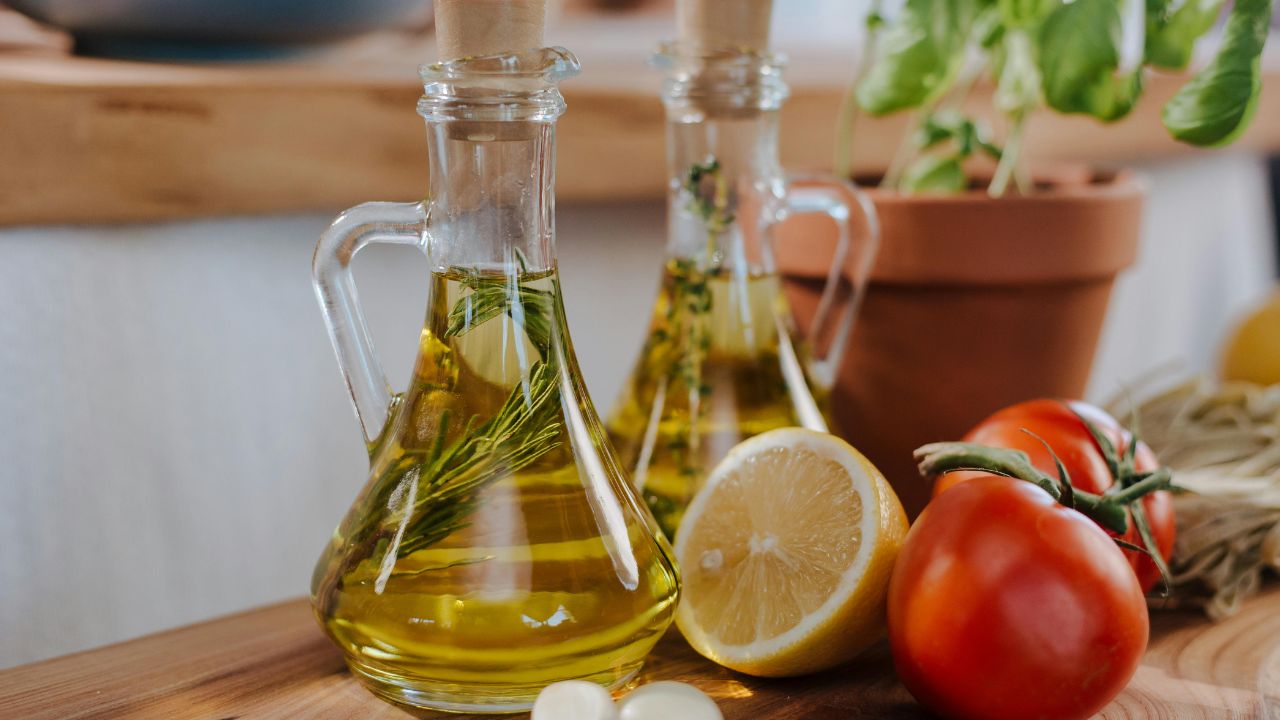Consider the delicious chocolate bar that fits you or the chewy, filling energy bar you take on a hectic morning. What holds them together, gives that ideal texture, and even increases their nutritional power? Remarkably, the solution usually comes from a basic ingredient—oil. Fundamental to the snack business, this dynamic mix of bars and oil affects taste and texture as well as shelf life and health benefits. Whether your interests are in creating a home bar or you are an inquisitive consumer, knowing this relationship opens a whole new respect for these quick snacks. Let’s explore the rather important part oils play in creating the bars we like.

Why Oil is the Unsung Hero in Bar Creation
Forget only being a greasy afterthought; oil performs in bars like the magic glue and texture maestro. Imagine trying without something to bind nuts, seeds, dried fruit, and grains into a firm, portable rectangle. Just dry components would break down right away. That is where oils become useful. They cover the individual bits to enable their cohesive binding. Still, it goes beyond mere power. The kind of oil you use greatly affects whether your bar comes out wonderfully chewy, satisfyingly crunchy, or gently soft. It lubricates between particles, regulating their sliding past each other when you bite down. A decent bar would almost certainly not have the ideal, non-crumbly texture we demand without the proper oil. Really, the fundamental component keeping the whole snack together is this one.
Picking Your Perfect Partner Choosing the Right Oil for Bars
Not all oils are made equally for producing excellent bars. This is a rather important decision. Start with taste first. Would you like the oil to vanish from view so that other flavours, such as chocolate or peanut butter, might take front stage? Alternatively do you wish it to bring unique character, akin to the rich, buttery overtones of coconut oil? Then comes health. Many bar manufacturers and home fans increasingly gravitate for oils recognised for beneficial fats, such avocado oil (neutral and heat-stable), unrefined coconut oil (for a tropical feel and solid-at- room-temperature structure), or extra virgin olive oil (for savoury bars). Popular neutral choices in commercial bars are light-tasting olive oil and sunflower oil. You also have to take into account how the oil handles cold; some harden and make bars firmer while others remain liquid.
Texture Tales How Oil Makes or Breaks Your Bar Experience
Ever bitten into a pub that seemed unusually greasy, rock-hard or disappointingly dry? Usually, the oil situation was off. For texture, the quantity and kind of oil utilised are absolute game changers. Too little oil causes your bar to crumble before it ever gets to your tongue. Too much and you get an unpleasantly sticky, thick sensation on your palate, not exactly refreshing! The particular oil also determines behaviour. Solid at cool room temperature, coconut oil provides bars a hard, often somewhat sharp bite. Liquid oils such as avocado or sunflower preserve bars’ softness and flexibility. Oils also produce that pleasing “moistness” in fruit and nut-based snacks and help spread flavours equally. The secret handshake to bar texture nirvana, that optimal chew or crunch that keeps you returning, is getting the oil balance just perfect.

The Health Boost from Smart Oil Choices in Bars
Gone are the days when, particularly in bars, oil in food was simply considered as empty calories. The proper oils are today celebrated powerhouses, actively improving the nutritional profile of a bar. Consider this: many bars advertise as healthy meal substitutes or snacks. Selecting oils high in unsaturated fats—such those from nuts, seeds, avocados, or olives—changes the bar into a source of heart-healthy fats. Often included in bar items such as seeds and dried fruit, these lipids are vital for absorbing fat-soluble vitamins (A, D, E, K). Valuable Omega-3 fatty acids can be added from oils such as walnut or flaxseed, which are sometimes used sparingly because of taste. Popular for its fast energy release, MCT oil—derived from coconut—Bar makers can greatly improve their product from a basic snack to a really nutritious choice by choosing oils known for their good fats and low processing level.
Common Oil Mistakes in Bar Making
Oil-related accidents can destroy a batch of bars even with the best of intentions. One common mistake is applying the wrong kind of oil for the intended result. For a delicate fruit bar, for instance, adding strong-flavored extra virgin olive oil will clash dreadfully. Errors in measurement are another trap. Eyeballing oil amounts is dangerous; a little too much can produce greasiness and separation; too little causes disintegration. Another absolutely vital factor is temperature. Melted coconut oil added to extremely cold components can cause lumps instead of a smooth mixing action. Delicate oils such as flaxseed can be ruined by overheating and produce off-flavours as well as nutritional loss. Ignorance of the fact that melted oil volume differs from solid oil weight will throw off home baking recipes. And last, employing rancid oil is a definite approach to ruin the full batch with nasty, stale tastes.
How Oil Impacts Your Bar’s Shelf Life
Nobody wants to open a pub only to discover it to be stale or, worse, contaminated. For bars to remain fresh, the oil inside surprisingly plays a quite crucial function. How would you do this? Oil first functions as a barrier. Coating the other components—grains, nuts, fruits—helps slow down the pace of oxygen from the air’s reaching them. This barrier effect increases the edible life of the bar since oxygen is a main offender in generating rancidity—that stale, cardboard-like taste—and deterioration. Certain oils by themselves are more resistant to rancidity and more stable than others. Generally speaking, oils high in monounsaturated fats (such as high-oleic sunflower oil) or saturated fats (such as coconut oil) have longer shelf life than those heavy in polyunsaturated fats (like flaxseed oil). Even stable oils, though, need assistance; appropriate packing that reduces air exposure is still crucial.

Popular Oils Powering Store-Bought Bars
Look at the ingredient list the next time you browse the energy bar shelves. You will probably find many popular oils performing the heavy work. Because of its adaptability, neutral taste, and tendency to stay semi-solid at room temperature—which gives bars structure without being too hard—place oil, often known as palm fruit oil or sustainable palm oil, is rather ubiquitous. Popular, reasonably neutral-tasting, reasonably cheap options used in many mainstream bars are sunflower and canola oils. Natural complementing flavours of peanut oil fit bars with peanut butter. Particularly in “natural” or organic bars, coconut oil is a great favourite for its health halo, unique flavour (in unprocessed forms), and textural qualities. High-oleic varieties of sunflower or safflower oil may also be seen; these are developed to be more stable and have a better fat profile. Nut butters sometimes provide the main fat supply.
Mastering Oil in Your DIY Bar Adventures
All set to master pub music in your own kitchen? Your first step towards DIY success is knowledge of oil! Start simply. First of all, recipes are your buddy since they offer tested oil kinds and amounts. Pay great attention to the status of the oil: should it be used liquid (like olive oil) or melted (like coconut oil)? Mixing is essential. For constant texture and binding, make sure the oil is equally distributed among the dry components. If you use sticky sweeteners like honey or dates, keep in mind they also provide binding force, therefore you could need somewhat less additional oil. Taste as you go! Chilled some oils solidify more than others. Let your homemade bars sit out for ten minutes if they seem overly hard straight from the refrigerator. excessively soft Try somewhat reducing a liquid oil or boosting a solid-at- room-temperature oil like coconut.
Exciting Oil Innovations Shaping Future Bars
The realm of bars and oil is dynamic and bursting with invention, not at all fixed! One hot trend is the increasing popularity of oils selected for especially great nutritional value. Consider more general use of avocado oil for its monounsaturated fats and high smoke point, or think of algal oil as plant-based DHA (an Omega-3 fat vital for brain function). One of the main forces is sustainability. Expect increasingly more bars embracing recycled oils (such as those recovered from pressed fruit or seed pulp) and switching away from contentious palm oil or just using certified sustainable sources. One additional frontier is flavour discovery. Premium bars include cold-pressed, handcrafted nut and seed oils—such as walnut or pumpkin seed oil—for unusual taste sensations. Technology is also involved; techniques to better capture delicate oils like fish or flaxseed inside the bar matrix help to prevent rancidity and hide strong flavours.

Why Organic Oils Are Rising in Bar Formulations
As you browse the ‘natural foods’ sections, you will find a buzzword—organic, particularly with relation to oil—more often on bar wrappers. This change captures rising customer desire for greener, more ecologically friendly products. Plants raised free from synthetic pesticides, herbicides, or genetically modified organisms produce organic oils. This implies less possible chemical residues in the oil itself and, hence, in the bar consumers buy if they are health-conscious. Environmentally, organic farming methods help to sustain more biodiversity, lower pollution from agricultural runoff, and improve soil quality. Although natural oils can cost more, many customers are ready to pay for the supposed environmental and health benefits. In response to this demand and to enhance their natural/organic identity, bar makers are including organic coconut oil, sunflower oil, or even olive oil.
Bars & Oil The Ultimate Difference Table
| Aspect | Coconut Oil 🥥 | Avocado Oil 🥑 | Palm Oil 🌴 | Sunflower/Canola Oil 🌻 |
| Texture Impact | Creates firmer, snappy bars (solid when cool) | Yields softer, pliable bars (stays liquid) | Gives semi-solid structure (balanced hold) | Results in neutral, soft texture (mild binding) |
| Health & Source | Rich in MCTs (quick energy); popular in organic bars | High in heart-healthy monounsaturated fats; neutral taste | Controversial sustainability; cheap & widely used | Often refined; budget-friendly & neutral; high-oleic versions healthier |
| Flavor Role | Adds tropical, buttery notes (unrefined) | Nearly flavorless; lets other ingredients shine | Neutral taste; doesn’t overpower | Very mild flavor; ideal for subtle profiles |
| Shelf Life | Very stable (resists rancidity) | Good stability (high smoke point) | Long shelf life (naturally semi-solid) | Moderate stability; high-oleic types last longer |
| Temp Sensitivity | Hardens when cold (may need to warm before eating) | Stays consistent (no texture change in fridge) | Stable across temps (reliable hold) | Little change; maintains softness |
| Best For | Chewy granola bars, keto bars, tropical flavors | Protein bars, savory bars, subtle-flavored mixes | Mass-market bars, crunchy textures | Budget bars, neutral bases, baked bar styles |

Bars and Oil – An Essential, Evolving Partnership
From binding your preferred granola bar together to giving vital healthy fats and maintaining freshness, the relationship between bars and oil is basic yet amazing. It’s a texture architect, a taste carrier, a nutrient booster, a preservation agent—not only a component. Knowing this link helps you to make better decisions whether you are making a batch in your kitchen or reading a label at the grocery. You can find bars created with better oils, value the science behind that ideal chew, and boldly try your own concoctions. This dynamic team of bars and oil will keep changing, promising even more delicious, nutritious, and intriguing snacks for our on-the-go life as breakthroughs in sustainable sourcing, new oil kinds, and nutritional science continue. Therefore, the next time you open a bar, stop to consider the silent, vital part the oil performs!
FAQ’s
1. Why do bars even need oil? Can’t they just stick together?
Oil is not only greasy! It’s the basic adhesive holding grains, seeds and nuts together so your bar won’t fall apart. It also provides the ideal texture—soft, chewy, or crunchy—and distributes flavours consistently over the snack.
2. What’s the healthiest oil to look for in a bar?
Search for bars containing oils high in beneficial unsaturated fats, such as unrefined coconut oil, avocado oil, high-oleic sunflower or safflower oil. These improve heart health and enable your body to absorb vitamins from the other components, therefore transforming an ordinary nibble into a more encouraging bite.
3. Why is my homemade bar sometimes too hard or too crumbly?
Texture problems usually have to do with the oil! Too little oil makes crumbling possible. Too much can turn things greasy. The type counts as well; liquid oils (such as avocado) keep bars softer while coconut oil sets for a firm bite. That ideal chew depends on getting the type and quantity just right.
4. Can the oil in a bar go bad?
Indeed, with time oils can develop rancid, giving the bar a stale, “off” taste. Good oils cover substances and decrease air exposure, helping to slow down this deterioration. Bars with stable oils—such as coconut or high-oleic varieties—and appropriate packaging keep well.
5. Can I swap oils in a homemade bar recipe?
Approach carefully! Different oils act much differently—solid rather than liquid, intense rather than neutral flavour. Changing liquid oil for solid coconut oil (or vice versa will significantly alter texture and stiffness. For optimum results—especially when beginning—stick to the oil type recommended in the recipe.



